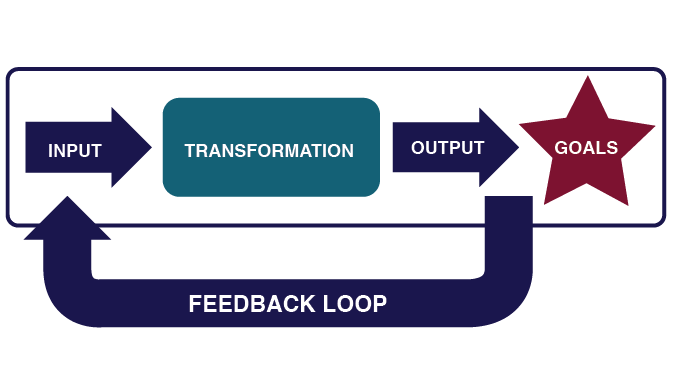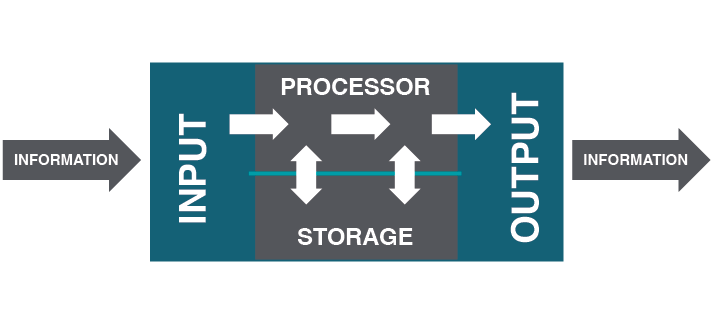1.2. Information Systems
To understand information systems it is important to first consider what a system and a systems thinking approach are. A system is a set of parts or components working together towards a common goal. A systems thinking approach looks at an entire process taking into consideration all of the parts in the system and how they work together instead of focusing on just one component. Systems thinking looks at the inputs in the process, and how they are transformed to create outputs to achieve goals. Feedback is an important consideration so that there is an opportunity to review the process and make changes if necessary.

Now that we understand what a system is, it helps us to better understand information systems. Information systems contain interrelated components (technology, people, and process) that allow us to take and transform meaningless data into useful information for decision making. Information systems are not new; they have been around throughout human history. The digital revolution enables us all to store and process data into information at unprecedented speeds. Ultimately, we take something that has little to no value on its own and we give it meaning within the context of our thinking, our business, and our world.

Information systems can be manual or digital, paper-based or computerized, low tech and low speed, or high tech and high speed. They can cost as little 99c in the shape of a cheap paper notebook or cost over $15 billion to develop, as IBM has spent on its sophisticated artificial intelligence system Watson.
Information systems are all around us, helping us make good decisions. We live in the age of Big Data, data that is so voluminous that we cannot store it in a single system, nor can we process it. We all contribute to the masses of global data by updating our social media, shopping online, or even reading this book online. All of that data piles up very quickly and organizations can use information systems to make sure they understand why events occur, and how to make changes for the future. Not all data gets processed, so the output of an information system will always be lower in volume than the inputs.
IT vs IS
Often Information Technology ‘IT’ and Information Systems ‘IS’ are used interchangeably, however, they are not the same. Technology is a subset, or one component of information systems as we can see from the information systems definition – contains interrelated components that allow us to take and transform meaningless data into useful information for decision making.
You may find discrepancies in the number of IS components identified depending on the textbook or source used, however most agree that systems are composed of hardware, software, data, procedures, and people. In this book, hardware, software, and networks are combined into ‘technology’. Data is identified as the input to the system and information is the output or purpose. IS components will be explored in more detail in the next section.
“1.1 Tech Is Everywhere” from Business Computer Information Systems by Emese Felvegi; Barbara Lave; Diane Shingledecker; Julie Romey; Noreen Brown; Mary Schatz; OpenStax; Saylor Academy; University of Minnesota Libraries; and Robert McCarn is licensed under a Creative Commons Attribution-NonCommercial-ShareAlike 4.0 International License, except where otherwise noted.
IT vs IS from Information Systems: No Boundaries! Chapter 1 by Shane M Schartz is licensed under a Creative Commons Attribution-NonCommercial 4.0 International License, except where otherwise noted.

